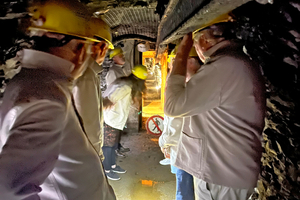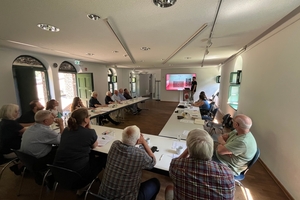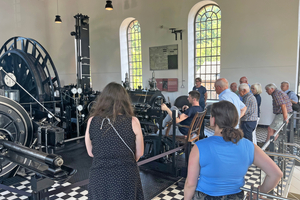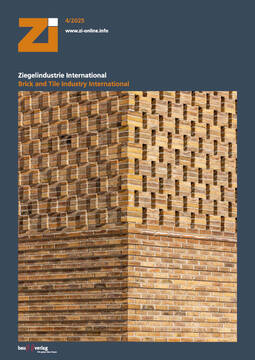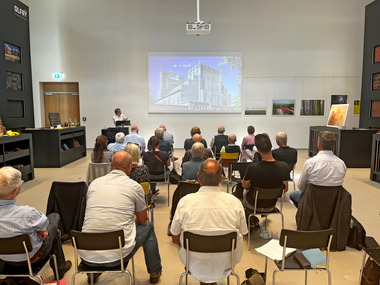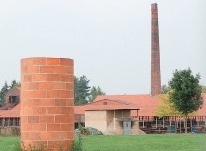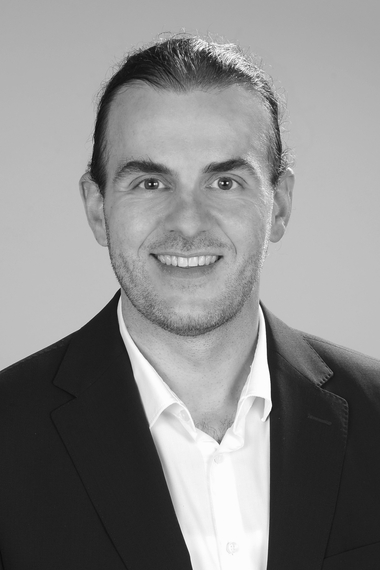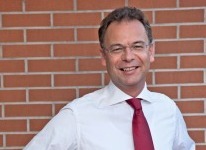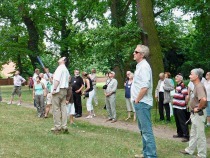Review of the 28th conference of the brickworks museums
On June 29 and 30, the 28th Brickworks Museum Conference took place at the LWL-Museum Zeche Nachtigall. Around 20 participants came together to get to know the colliery, discuss the work of the museums and current developments.
Sunday
Sunday afternoon, the participants met at the light railroad station of the colliery and took the train to the Nachtigall Colliery site. There they were welcomed by the organizers, Willi Kulke, Johana Simon and Laura Opel of the Lage Brickworks Museum of the Landschaftsverband Westfalen-Lippe (LWL), as well as the hosts of the Nachtigall Colliery Museum, the director Gerben Bergstra and his deputy Nikolai Ingenerf. Bergstra and Ingenerf presented the history of the mine which closed in 1892, and the museum and also talked about the history of coal mining in the Ruhr region. The mine site was subsequently used for the production of building materials. Sandstone was extracted from quarries as well as slate clay, from which up to eleven million bricks were produced annually in a specially built steam brickworks. There was also a factory for the manufacture of brick-making machines.
After the speeches, the participants were able to explore the mine site and take part in a guided tour through the 130-metre-long visitor tunnel. Nikolai Ingenerf explained the working conditions there using, among other things, everyday objects in the tunnel. Bending down in the dark corridor between struts and planks, it was not difficult to imagine how demanding the work was.
At the end of the first day, the participants met for dinner. This was a great opportunity to exchange ideas.
Monday
The second day was dedicated to the lecture program. In the first lecture, Laura Opel talked about the “Myth of Bricks - Between Emotionality and Rationality”. She discussed the mythical potential of the building material. Bricks are attributed or transferred properties from various sides that go beyond the physical object. In marketing, for example, the brick appears as durable, sustainable and natural. As a particularly preferred building material in certain periods, brick has gained special significance, for example as a building material of industrial culture. Finally, tradition and its cultivation, for example in Lippe brickmakers‘ associations, also play a role in charging the brick with memories. The conference itself also is an example of continuing the myth of the brick.
Inga Wopke and Joris Coolen from the LWL Archaeology Department for Westphalia presented a historical-archaeological project entitled: Hard cobblestones! Archaeological prospection of the Deutsche Keramit-Werke in Dorsten-Holsterhausen.
The project’s starting point was an aerial photograph of a grain field in Dorsten from 2010 showing traces of earlier buildings. After initial suspicions of ancient traces of a Roman settlement, it turned out to be the remains of a keramite factory founded in 1911. Keramite is a very hard clinker brick made of lime clay, the production of which was patented in Budapest in 1903. The road construction material was mainly used in the territory of the Austro-Hungarian monarchy and in Eastern Europe. However, it proved to be unsuitable as it forms a mirror-smooth surface when wet. According to documents, the plant, which was shut down again in 1914, had a ring kiln 136 meters long and 25 meters wide. An electric steelworks was built here in 1916 and operated until the 1920s.
Coolen described the methods of geophysical prospection, ground penetrating radar and magnetic surveys carried out on the site. The latter can be used to detect not only magnetic metals but also ceramic components. The presentation of the measurement results led to a lively discussion about their interpretation.
Katja Zakrzewski, museologist at the Mildenberg Brickworks Park in Brandenburg, spoke about the transformation of the Brickworks Park from a monument of industrial culture to an extracurricular place of learning. Inspired by a presentation by museum educator Jessica Waldera at last year‘s conference of brickworks museums, a new educational concept was developed in Mildenberg. The focus was on the realization that visitor groups, especially schoolchildren, tend to see the Brickworks Park as a leisure and recreational area.
In order to emphasize the museum aspect more strongly, a dialogical workshop concept was developed for different age groups. The Brickworks Park should thus be perceived and used as a place of extracurricular learning. The workshop concept will have its first test run on July 2.
In the last lecture, “Raw materials, regions, wealth - an unfair game?”, Nikolai Ingenerf presented an interactive special exhibition project that is particularly popular with school groups. It is a game in which the participants play the role of countries for raw materials, economic success and the preservation of the international order. The mechanics of the game are reminiscent of computer games such as Settlers or Civilization. The adult participants at the conference were also enthusiastic about this special approach to museum education during a trial game.
Reports from the individual brickworks museums in Westerholt, Cham and Lage concluded the lecture program.
In the last item on the conference agenda, the participants were asked to reflect on museological issues relating to brickworks museums in small groups. The results were then collected and discussed.
Another conference of brick museums is planned for next year.


